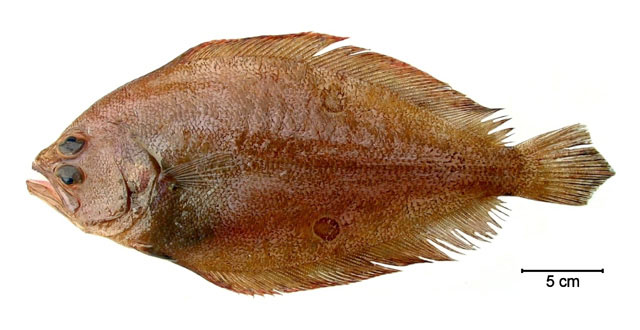| Paralichthyidae (Large-tooth flounders) |
| 32 cm TL (male/unsexed); 38 cm TL (female); max.weight: 456.1 g |
|
demersal; marine; depth range 50 - 190 m |
| Southwest Atlantic: Brazil to Argentina. |
|
Dorsal spines (total): 0-0; Dorsal soft rays (total): 79-92; Anal spines: 0-0; Anal soft rays: 65-72; Vertebrae: 38-39. Caudal fin double truncate (Ref. 27363). Almost wholly ambicolorate, the blind side is darkly pigmented except for the anterior portion of the body which has dark pigments only on the opercle, subopercle, a small region adjacent and dorsal to the head, and the distal half of the pectoral fin; two lighter pigmented areas were present on the unpigmented dorsal region of the head. The blind side had one of the 3 typical ocelli (upper one) in the same position with that of the ocular side (Ref. 34245). |
| Prefers hard or sandy substrates, rarely on mud (Ref. 43588). Feeds on fishes and cephalopods (Ref. 36453). |
|
Data deficient (DD); Date assessed: 06 December 2019 Ref. (130435)
|
| harmless |
Source and more info: www.fishbase.org. For personal, classroom, and other internal use only. Not for publication.
